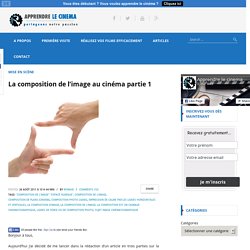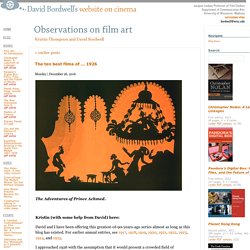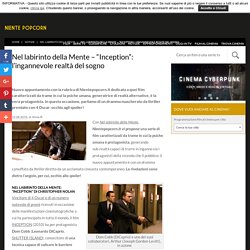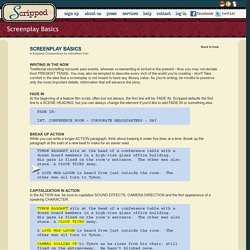

ANALYSE FILMIQUE. TECHNIQUES CINEMATOGRAPHIQUES. Film Studies. FILMS & ANALYSE | société et humanité ? Langage du cinéma. Terminale CAV. Les Leçons de Cinéma. Initiations au vocabulaire de l’analyse filmique [cours de cinéma en ligne ] Initiation au vocabulaire de l’analyse filmique (cours de cinéma en ligne) LEXIQUE DU CINEMA. Le cadre au cinéma (composition, angles, plongée et contre-plongée) La composition de l’image au cinéma partie 1. Bonjour à tous, Aujourd’hui j’ai décidé de me lancer dans la rédaction d’un article en trois parties sur la composition de l’image (ou plan cinématographique).

Évidemment, tout ce que je vous dirai dans ces articles n’est pas immuable et vous trouverez toujours des contre-exemples. [Cours en ligne] Sémiologie du Cinéma. Discipline, née dans les années 1960, dont l’activité consiste, pour l’analyse du cinéma, dans l’importation et l’exercice des notions et des méthodes de la sémiologie et de la linguistique : code, message, sous-code, énoncé, syntagme, paradigme, signifiant, signifié, articulation, etc.
![[Cours en ligne] Sémiologie du Cinéma](http://cdn.pearltrees.com/s/pic/th/cours-ligne-semiologie-cinema-32601890)
Les thèses fondamentales de la sémiologie du cinéma s’appuient sur ces constatations : – Le cinéma n’est pas une langue, pas même un espéranto, dans la mesure où il est multicodique (même si les théories montagistes du cinéma se sont faites sur le modèle d’une syntaxe cinématographique, de même que la codification traditionnelle des mouvements d’appareil). Il est une sorte de langage, à condition de ne pas s’en tenir à une définition du langage comme « système de signes destinés à la communication » : la signification, la signifiance débordent le domaine du signe et de la communication. – Le nombre d’images réalisables au cinéma est indéfini. Critical Commons. Observations on film art.
The Adventures of Prince Achmed.

Kristin (with some help from David) here: David and I have been offering this greatest-of-90-years-ago series almost as long as this blog has existed. Metaphilm - See through cinema. 7ème Art. Film. Cinephilia. Initiation au cinéma. The Permanent Seminar on Histories of Film Theories. 100 Ideas That Changed Film. By Maria Popova How the seventh art went from magic lanterns to state-of-the-art computer-generated imagery in 100 years.

When a small handful of enthusiasts gathered at the first cinema show at the Grand Cafe in Paris on December 27, 1895, to celebrate early experimental film, they didn’t know that over the next century, their fringe fascination would carve its place in history as the “seventh art.” But how, exactly, did that happen? In 100 Ideas that Changed Film, Oxford Times film reviewer David Parkinson and publisher Laurence King — who brought us 100 Ideas That Changed Graphic Design and the epic Saul Bass monograph — offer a concise and intelligent chronicle of the most influential developments since the dawn of cinema.
Parkinson promises in the introduction: Film Speak. Index of motion picture terminology. HOW TO SOUND LIKE A FILM SNOB. Film Studies For Free. Film Studies For Free. Critical Studies in Television - Studies for Small Screen Fiction. 15 Film Production Credits Explained. Ever wonder what all those strange credits are when they roll by at the end of a film? I used to, until I moved to LA, where I started meeting Best Boys and Dolly Grips with their kids when I took my son to the playground—yes, Hollywood, where you meet Gaffers and Armourers at your average Saturday night house party.
So I started asking questions, and here's what I've learned: 1. Boom Operator No, this job has nothing to do with explosives or pyrotechnics. 2. Now this job does deal with explosives, of a sort. 3. Though the gaffer manages the entire electrical department, all the guys who run cables and hang lights, his main responsibility is mounting and positioning lights and lighting rigs. 4. Grips are sort of like worker bees. 5. This guy runs the Grips dept and assists the Gaffer. 6. This guy has nothing at all to do with a wedding, unless we're talking something like Wedding Crashers . 7. A dolly grip operates the movie camera dolly. 8. 9. 10. This guy oversees the painting dept. 11. Being Winston Wolfe: 9 Reasons Why 'Pulp Fiction' is the Management Guide Every Indie Filmmaker Needs. Winston Wolfe in "Pulp Fiction. " Remember Harvey Keitel as Winston Wolfe? Of course you do. His appearance in “Pulp Fiction” as the fixer, the cleaner who knew how to take care of Jules’ and Vincent’s boneheaded mistakes, was a model of efficiency under pressure -- a no-nonsense performer who got the job done with style.
And, as producer Justin Szlasa presents in this terrific essay, if every movie set were run by Winston Wolfe, the world would be a better place. Szlasa recently produced the digital filmmaking doc “Side By Side” that premiered at the Berlin International Film Festival. It looks like the time he spent in that considerably wonkier arena will serve him well as an independent filmmaker. S7 LE MONTAGE : ENCHAINER DEUX PLANS. S9 - LE MONTAGE : ORDONNER LE RÉCIT. S8 - LE MONTAGE : ORDONNER LE RÉCIT. LE MONTAGE. The DIY Filmmaker's Toolkit. Making Movies. Filmmaking. François Truffaut. Nolan vs. Nolan. Nel labirinto della Mente – “Inception”: l’ingannevole realtà del sogno. Con Nel labirinto della Mente, Nientepopcorn.it vi propone una serie di film caratterizzati da trame in cui la psiche umana è protagonista, generando sub-realtà capaci di trarre in inganno sia i protagonisti della vicenda che il pubblico: il nuovo appuntamento è con un dramma camuffato da thriller diretto da un acclamato cineasta contemporaneo.

Le rivelazioni sono dietro l’angolo, per cui, occhio allo spoiler! Dom Cobb (DiCaprio) e uno dei suoi collaboratori, Arthur (Joseph Gordon-Levitt), in azione Vincitore di 4 Oscar e di un numero notevole di premi ricevuti in occasione delle manifestazioni cinematografiche a cui ha partecipato in tutto il mondo, il film INCEPTION (2010) ha per protagonista Dom Cobb (Leonardo DiCaprio, SHUTTER ISLAND), conoscitore di una tecnica capace di valicare le barriere delle Menti altrui, entrando in esse ed agendo al loro interno mentre il soggetto ospite giace assopito nella realtà.
Il totem usato dall’Architetto Ariadne (Ellen Page) Art of the Title. Forget the Film, Watch the Titles - Home. Film/script. Production Portfolio. Note d'intention : conseils et exemples pour votre scénario de film. Petite guide pratique sur la note d’intention, ce document déterminant pour tous scénaristes.

Bien souvent, les scénarios envoyés aux producteurs ne sont pas lus. C’est bien dommage, mais c’est malheureusement la vérité. En tout cas ce n’est pas ce qui est lu en premier. Screenplay Basics - Scripped - StumbleUpon. A Scripped Compendium by Johnathan Carr Traditional storytelling recounts past events, whereas screenwriting is locked in the present - thus you may not deviate from PRESENT TENSE.

You may also be tempted to describe every inch of the world you're creating - don't! Take comfort in the idea that a screenplay is not meant to have any literary value. As you're writing, be mindful to preserve only the most important details: information that will advance the story. At the beginning of a feature film script, often but not always, the first line will be: FADE IN. While you can write a longer ACTION paragraph, think about keeping it under five lines at a time.
In the ACTION line, be sure to capitalize SOUND EFFECTS, CAMERA DIRECTION and the first appearance of a speaking CHARACTER. Use a PARENTHETICAL to note an action the speaker is performing while speaking or if you want to indicate whom the speaker is addressing such as addressing a new character in mid-DIALOGUE. Come scrivere una sceneggiatura. Scénarios. FILM : CINEMA. Cinema. Cine. Cinéma. The use of black and white segments within modern colour films. An essay for 'Case Studies in Media Production and Interpretation' MA in History of Film and Visual Media David Mitchell November 2001 Note: Halfway through writing this essay, I came across the text of a lecture by Adrienne Redd that covers somewhat similar ground.

Her primary focus is on how 'color and black-and-white have been used together for symbolic effect' and she mentions several of the same films I do, such as Pleasantville and The Purple Rose of Cairo, as well as many more that I do not. Although I found her work a useful stimulus, I have tried to avoid plagiarism by steering my essay away from the issues on which she concentrates. The lecture, 'Chroma-Cinema: the Use of Color in Color and Black-and-White Films', can be found at the Criticism.Com web-site: The opening scenes of The Wizard of Oz (Fleming, 1939, US), set in Kansas, are shot in sepia. (1) It is not until the twister transports Dorothy and Toto to Oz that colour enters the diegetic world.